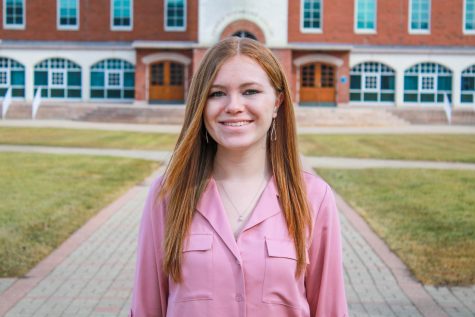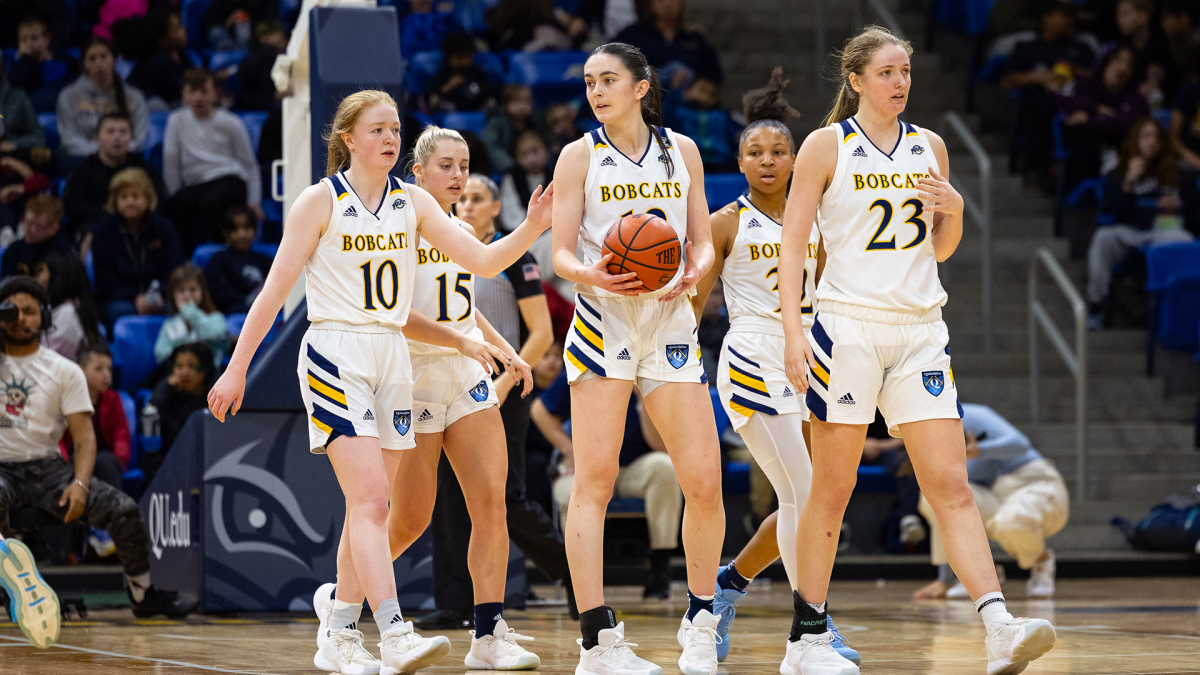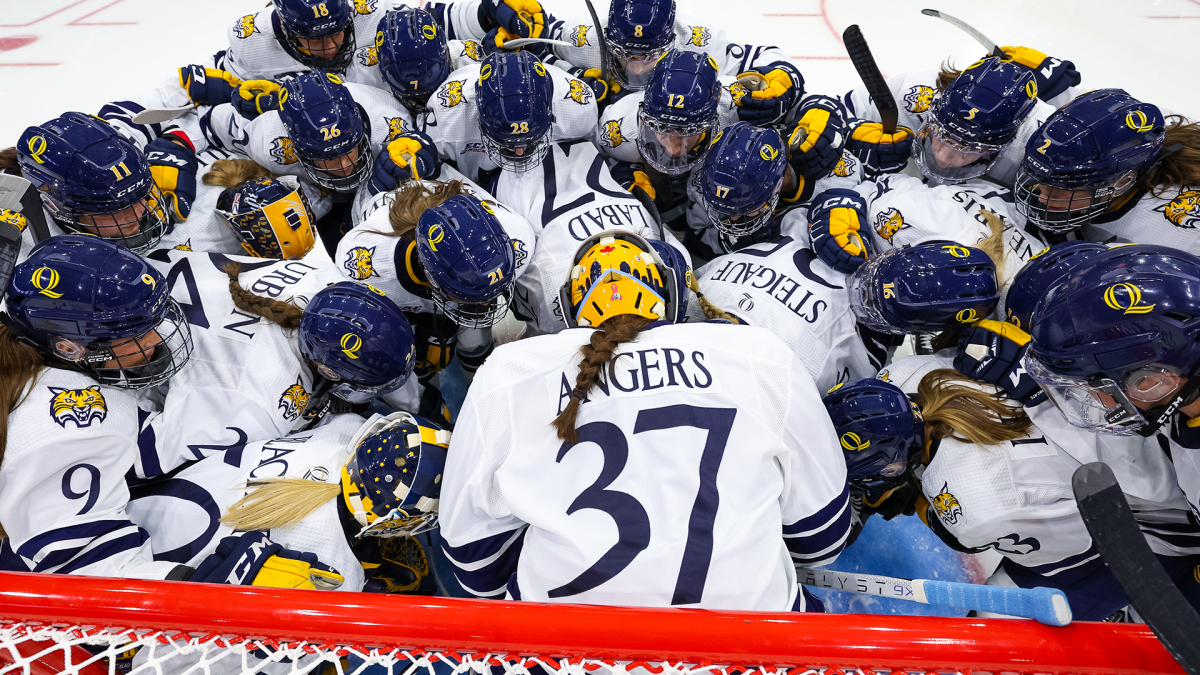Reporter and Quinnipiac alum detained by police while covering demonstration
May 14, 2019
On May 9, Bridgeport police briefly detained a Hearst Connecticut Media reporter from the Connecticut Post and a Quinnipiac alum, Tara O’Neill, while she was covering a demonstration in Bridgeport.
“I didn’t see really what happened,” O’Neill said. “In that moment, I was just like wait, I just got handcuffed?”
O’Neill was covering a protest, “Justice for Jayson,” when this took place. Two years ago, a Bridgeport police officer shot and killed 15-year-old Jayson Negron on Fairfield Avenue. Each year on the anniversary of the shooting, his family and other protestors gather to try to get the officer removed from the Bridgeport Police Department, despite being cleared by the Connecticut State Police investigation to go back on duty.
O’Neill was at the protest earlier in the evening from about 5-7 p.m. and noticed that things were peaceful. She went back to the newsroom and filed a story just before 8 p.m. Right after this, she heard chaos on the police scanner and asked one of the photographers, who was leaving at the time, to check out the scene on his way out. Shortly after, he called her and suggested that she should go down.
O’Neill arrived at approximately 8:20 p.m. Just before she got there, there was a confrontation between police and the protestors. When she arrived, the protestors had gone back into the street and were holding hands and singing. There were many officers there at this point standing in a Walgreens parking lot because they had called for every available officer in the city to come respond. They lined up across the street facing the protestors.
“I was actually on the phone with someone, and I was facing toward where the police were, so my back was to the protesters at this point,” O’Neill said. “One of the protesters, I think it was one of the protesters, I can’t know for sure because I wasn’t looking at them, but something got thrown. It was either a bottle, or maybe a candle, and it shattered in the street. And that’s when the deputy police chief who was there, him and another officer actually, walked up to the protesters and told them that they had five minutes to clear off the street.”
O’Neill purposely situated herself on the sidewalk between the police and the protestors. She saw police tell one of the protestors to move off of the street and onto the sidewalk.
“In my mind, I’m thinking about trying to film and also thinking, ‘OK if they’re pushing him onto the sidewalk I must be good where I am then.’ They must just want them off the street so they can reopen traffic,” O’Neill said.
While she was facing the protestors, filming what was happening, a police officer came up to her.
Footage of me getting arrested in #Bridgeport while covering a #JusticeforJayson protest on the two-year anniversary of his death. pic.twitter.com/4zEFIHSKj9
— Tara O’Neill (@Tara_ONeill_) May 10, 2019
“I didn’t even see it, but an officer I guess had come up on the sidewalk to my left,” O’Neill said. “I guess he started saying, ‘You gotta move on, you’ve got to move along’ or something to that effect. And I said, ‘you know this is a public sidewalk,’ and as I’m saying that he had actually already grabbed my hand, which I was holding my phone to film with that hand. And he kind of just grabbed it and pulled it behind my back and tightened the handcuffs. And then I yelled out, ‘I’m with the press,’ and he grabbed the other hand, handcuffed me and just said ‘OK.’”
O’Neill was placed in the back of a police car and brought to booking. In that moment, she knew that she needed to call someone to make them aware of the situation.
“I managed to get my phone out of the pocket of my cardigan actually and used that ‘Hey Siri’ function on the phone because obviously I couldn’t get my hands to call, and I called our vice president of news and digital content [Matt DeRienzo].”
She then called one of her copy editors, so he would understand what was going on and let the others in the newsroom know in case someone needed to go to the police station to vouch for her.
After a couple of minutes had passed, O’Neill was brought into booking.
“I remember asking the officer again at this point, still just thinking about my deadline, what time it was, and he told me it was 9:05 [p.m.],” O’Neill said. “The deputy chief who had actually been on the scene earlier who was kind of making the calls, he, I guess, had gotten a phone call from someone in the mayor’s office, who had spoken to to the person I had called, who was trying to kind of sort things out and explain why my arrest was not really correct.”
While O’Neill’s belongings were being sealed up, and as she prepared to get a fingerprint and mugshot taken, the officer who arrested her came in and said that she was free to be escorted out without any charges.
“All of the individuals detained we arrested because they did not comply or disperse,” the incident report, sent by Terron Jones of Bridgeport police, said. “While at BPD headquarters, an arresting officer was advised that one of the detainees was a member of the press. The reporter wearing plain street clothes and no clearly visible identifying markers other than an ID name badge was released without a summons, as she was not part of the organizers.”
Bruno Matarazzo, president of the Connecticut chapter of the Society of Professional Journalists, issued a statement in response to the arrest of O’Neill on behalf of journalists.
“The fact that Bridgeport police found it appropriate to arrest a reporter is disturbing,” Matarazzo said. “Tara O’Neill was reporting on Thursday’s protest to write a news story. She was not a participant and identified herself as a reporter when an officer handcuffed her. The fact that someone could be arrested in Bridgeport for the lawful exercise of a First Amendment right is chilling.”
O’Neill is not used to seeing her name on headlines, as she is normally the one reporting stories.
“It’s just been very weird to have someone send me the link to a news story, and I click it, and I’m the subject of the headline, and my name is named in the story and not on the byline,” O’Neill said. “It’s just been so weird and such an experience I never expected I would become a part of… I can’t say that I ever thought I would get handcuffed or detained or arrested or anything like that just for doing my job.”
Still a young reporter and only a graduate of the class of 2016 at Quinnipiac, O’Neill lives with her parents. She didn’t immediately tell them that she got arrested because she knew that they wouldn’t be able to help her out of the situation.
“I think now my parents have kind of always been worried about me going out to cover crime scenes for homicides and shootings and stuff like that. They’ve always kind of had that fear of what could happen to our daughter. And I think now they’re just a little bit more intense about it,” O’Neill said. “Friday and Saturday they were both texting me probably about every hour of my shift just to make sure I look to make sure I hadn’t had anything else happen.”
Despite having to do interviews with other reporters and process what happened, O’Neill went right back to work.
“The last couple of days trying to process it while simultaneously still trying to do my job has just been a very odd experience,” O’Neill said.








